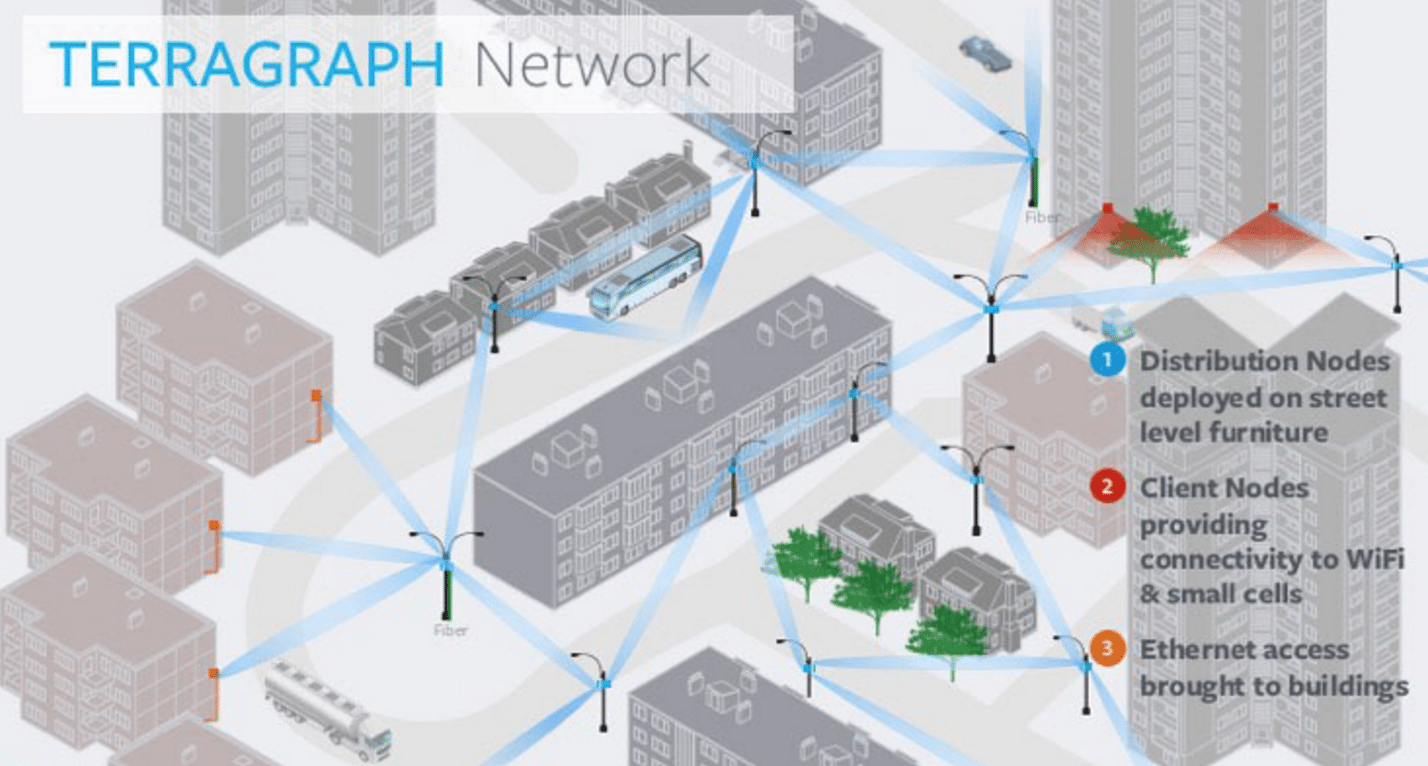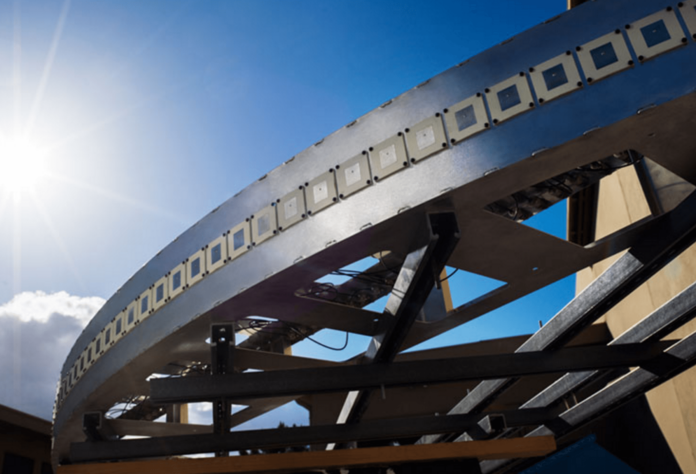Facebook Connectivity Lab unveils Project ARIES and Terragraph at F8
Facebook CEO Mark Zuckerberg has been keenly focused on expanding the reach of high-speed Internet around the world, bringing connectivity to previously unconnected places and, in the process, bringing new Facebook users into the fold.
His efforts have taken shape through Internet.org, which provides zero-rated access to some websites and has been dinged in India for violating precepts of net neutrality, to concepts for solar-powered planes beaming Internet and even using artificial intelligence to analyze satellite imagery to locate unserved populations.
To that end, this week during the F8 conference, Facebook unveiled the Terragraph 60 GHz wireless system designed for dense urban areas, as well as Project ARIES, a proof-of-concept focused on spectral efficiency.
Terragraph is a multi-node system built from off-the-shelf components and supported by cloud-based data processing.
According to a Facebook blog post from Neeraj Choubey and Ali Yazdan Panah, “Delivering gigabits of capacity requires multiple gigahertz of spectrum via frequency reuse. Although 60 GHz has traditionally been avoided due to its high absorption of oxygen and water, countries such as the United States, United Kingdom, Germany, China, South Korea, Japan, and others saw the benefit of making this part of the spectrum — also known as “V-band” — unlicensed, similar to the Wi-Fi 2.4 GHz and 5 GHz bands. Up to 7 GHz of bandwidth is available in the 60 GHz band, and forward-thinking countries like the United States are seeking input to expand this to a total of 14 GHz.
“Given the limited range of the 60 GHz signal, these nodes are placed across a city at 200-250 meter intervals. The vast bandwidth and unique signal-absorbing nature of the band limits interference and simplifies network planning, while the unlicensed nature of the spectrum helps to further minimize costs. Designed to provide street level coverage, Terragraph implements a phase array antenna to retain the highly directional signal required for 60 GHz, but makes it steerable to communicate over a wide area.”

Project ARIES, which builds on MIMO technology to add even more streams at the base station looking ahead to 5G, is focused on maximizing throughput in small bandwidth scenarios and energy efficiency.
The base station in this case has 96 antennas and can support 24 streams simultaneously over the same bit of spectrum. Facebook said it is currently able to demonstrate 71 bps/Hz of spectral efficiency with the goal of getting to more than 100bps/Hz.
Choubey and Panah wrote, “Today, 4G cellular and WLAN systems use a technology called MIMO — multiple input, multiple output. The progression toward 5G comes with Massive MIMO, an advanced wireless technology that uses a large number of antennas. ARIES is an embodiment of such a technology — by using the notion of “spatial multiplexing,” the antenna array at the base station can serve a multiplicity of autonomous user terminals on the same time-frequency resource. This spatial resource sharing policy serves as an alternative not only to the need for spectrum licensing, but also the procurement of additional base stations in conventional cell-shrinking strategies.”
Facebook is testing Terragraph at its headquarters in Menlo Park, California, with plans for a larger trial in San Jose.
The goal with ARIES is to expand on the testbed learnings to conquer rural connectivity challenges.
From the blog post, “Our recent population distribution study across 20 countries, we know that nearly 97% of the global population lives within 40 kilometers of a major city. As such, we are interested in developing this technology to harness the incredible gains in providing communications to rural communities from city centers. Additionally, providing backhaul to rural environments can be prohibitively expensive, but the hope with systems such as these is that costly rural infrastructure can be avoided while still providing high-speed connectivity. Moreover, we would like to make this technology open to the wireless communications research and academic community, so we can help build and improve on the already implemented algorithms or devise new ones that will help solve broader connectivity challenges of the future.”

